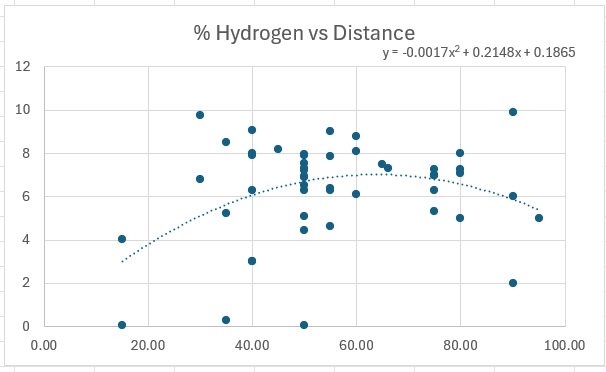How to teach periodic trends without being boring.
- Brennan Koch
- Dec 20, 2022
- 3 min read
Some topics are a little dry. No matter how important they are or how intrigued you are, the students just don't connect. I will share a metaphor that I use in class when teaching the background of periodic trends such as effective nuclear charge and radius. Plus the story has cheerleaders... so there's that.
It is not shocking that I was a nerd in high school.
Skinny? Check.
Band? Check.
Academic decathlete? Double check.
And playing up my nerd-dom is the basis for our story. You see, back in the nineties, cheerleaders were the epitome of popularity. Anything that was chosen as cool, was carefully selected by the cheerleaders. They were most definitely an attractive force. An attractive force that we nerds had no social access to.

And here is where your students will really start to engage. Ask them this simple question about a stereotypical scenario and they will get it right every time.
"What guys in the school had the best shot with a cheerleader?"
And all of your students say in unison... "the football players."

But not just any football players. In fact, there are two that are the closest to the cheerleaders; the quarterback and the running back (for us chemistry folks, we could refer to them as 1s2). Then there is a secondary ring around them. Those are the skill players (2nd energy level). Then the linebackers. Then the special teams. Then the water boy. And finally after layer upon layer of guys surrounding the attractive center of the school comes the nerds. We are always relegated to the furthest reaches.
You could even call us valence.
And while I am telling this story, I am making it more and more fantastical. The kids really begin to see how cheerleaders (protons) and football players (core electrons) start to effect the social world.
Ask this question, "What could we do to increase the chances of a nerd getting a date with cheerleader?"
The answers are simple. Get more cheerleaders. Or lose some football players. You see, as the ratio of cheerleaders to football players increases, the nerds have a better chance. So as we are walking down the hall, the attractive force of the added cheerleaders pulls us closer to the social center. We get closer to the "nucleus" as the number of "protons" increases. Therefore, as effective nuclear charge, which is cheerleaders minus football players, increases, the radius decreases.
And now you get to connect it to the periodic table. In a given period, as you move left to right, the shielding electrons (football players) stays the same while the number of protons (cheerleaders) increases. So Zeff increases to the right and radius decreases.
And all the while, kids have been making a mental picture of attraction. One that you can leverage while you talk about all the trends. At the end of the day, you have engaged their minds into creating models of the invisible world, all the while they were entertained and picturing you walking down the hall of high school in all of your nerdy, trombone playing, academic decathletic glory.
Isn't it a wonderful sight.
Want to engage your students while introducing the mole? Without notes? While not being boring? Check out our game, Up & Atom. You can also read about how to use the game in one of our most popular blogs.
Ready to engage your kids in a brand new way?
Buy a classroom set of Up & Atom which will keep 30 kids talking about moles. On their first day of stoich.





Comments